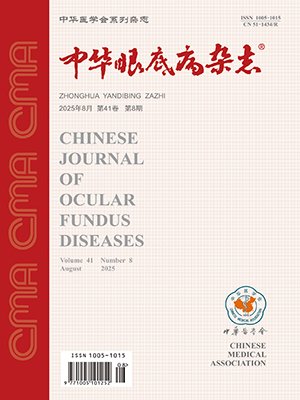Objective To observe the systemic inhalation anesthetic effects of preterm children with different gestational ages under ocular fundus examination, and to assess its safety. Methods Fifty-one preterm children with retinopathy of prematurity (ROP) were included in the study. These kids were divided into 2 groups, group Ⅰ included 24 kids with a corrected gestational age of 33 to <44 weeks, and group Ⅱ included 27 kids with a corrected gestational age of 44 to 64 weeks. The preterm months were same (t=-1.3.P>0.05), but the body weights were different (t=-10.5.P<0.05) between these two groups. Anesthesia was induced by inhalation of 6% sevoflurane, and the period from the beginning of inhalation to disappearance of body movement was the induction time. 6% sevoflurane was inhaled continuously for another period of the induction time, and then the concentration of sevoflurane was adjusted to a maintenance concentration. The initial maintenance concentration was 3%, and was adjusted by 0.5% each time. Sequential method was used to determine the subsequent maintenance concentration. If the preceding patient had not moved during the maintenance period, the sevoflurane concentration was decreased by 0.5% for the next patient. If the preceding patient had moved during the maintenance period, the sevoflurane concentration was increased by 0.5% for the next patient. Respiratory depression and cough during the induction and maintenance period, duration of anesthesia and recovery time were recorded. Choking and vomiting during drinking or milk-feeding in one hour after the ocular fundus examination were also recorded. Results The effective inhale concentration in 50% patient of sevoflurane was 2.5% in group Ⅰ, 2.9% in group Ⅱ. The average maintenance concentration was (2.5 plusmn;0.5)% in group Ⅰ, (3.0 plusmn;0.5)% in group Ⅱ. The difference was statistically significant (t=-3.3.P<0.05). The average duration of anesthesia and the average awake time were the same (t=0.04 and -1.0 respectively.P>0.05) between these two groups. The average induction time was significantly shorter in group Ⅰ than in group Ⅱ, the difference was statistically significant (t=-4.9.P<0.05). All patients were successfully completed the ocular examination. No respiratory depression or cough occurred during and after the examination. No choking and vomiting during drinking or milkfeeding in one hour after the ocular fundus examination. Conclusion Anesthesia with inhaled sevoflurane by a face mask is safe for preterm outpatients undergoing fundus examination.
Citation: 于玲,孙宏伟,姚兰,冯艺,黎晓新. Safety of inhalation anesthesia in preterm children of different corrected gestational ages undergoing ocular fundus examination. Chinese Journal of Ocular Fundus Diseases, 2013, 29(4): 396-399. doi: Copy
Copyright © the editorial department of Chinese Journal of Ocular Fundus Diseases of West China Medical Publisher. All rights reserved




